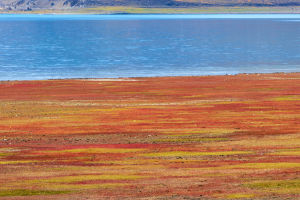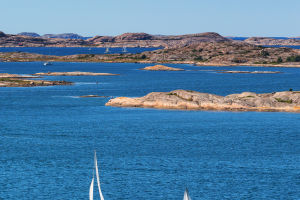Grand Teton National Park, located in the southern part of the Rocky Mountains, is neighbored by Yellowstone and Glacier National Parks to the north and Banff and Carlsberg National Parks in Canada.
With eight peaks over 3,600 meters above sea level (the highest peak in the United States is only 4,417 meters), seven lakes scattered like pearls at the foot of the mountains, and hundreds of alpine lakes hidden in the mountains, as well as glaciers and herds of wildlife, the park is a photographer's paradise.
The Teton Range, which is primarily composed of the 60-kilometer-long Teton Range, is home to eight mountains that exceed 3,658 meters, including Grand Teton, which is 4,198 meters high. Seven lakes are pearl-like at the base of the mountain, and there are hundreds of alpine lakes in the mountain range.
One of the must-see places in the park is Grand Teton Signal Mountain, which offers a view of the 13,000-foot towering body rising from the Jackson Valley, surpassing even Japan's Mount Fuji. The mountain is covered with snow all year round, giving it a gentle and quiet beauty that is extraordinary.
Jenny Lake is another scenic spot that will leave visitors in awe with its blue sky, blue lake, and the Cathedral Group basking in the sunlight with hot tones reflected in the quiet lake. The peaceful and tranquil environment is enhanced by the saturated colors that make it an ideal spot for photography.
The Cathedral Traverse is a classic route that passes through the highest peaks of the Grand Tetons, filled with wild grass, canyons, darkness, and rapids. Although it is challenging, it attracts some of the world's most incredible A-list climbers. Walking up this route leads to the highest peak of the Grand Tetons, at roughly 13,770 feet, which is a bit like a shark's fin and intimidating. The traverse is also home to jagged boulders, massive vertical crags, toe-knife ridges, and never-before-seen animals.
Schwabachers Landing is rated by photographers as the best place to photograph Teton Peak, especially during sunrise and sunset. It is located at the end of Schwabachers Landing Road, a turnoff on the west side of US-191 about 6.5 miles north of Moose Junction.
Mormon Row, located a little north of the junction of Mormon Row Road and Antelope Flats Road, is home to two 100-year-old dilapidated barns. The background of the barns is the majestic Tetons and the desolate western grasslands, creating a striking contrast to the beautiful lake and mountains of Grand Teton. It attracts a large number of photographers and tourists alike, even though it is not marked on the map.
This site became famous thanks to a black-and-white photograph taken by the master photographer Adams in 1942, in which the Snake River shows a distinct S-shape, which was very precious at that time with the technology of photography. Now the trees on both sides of the river have grown taller and it is difficult to get a clear picture of the S-shaped river, but there are still many photographers and tourists who come here with admiration to follow in the footsteps of their predecessors.


